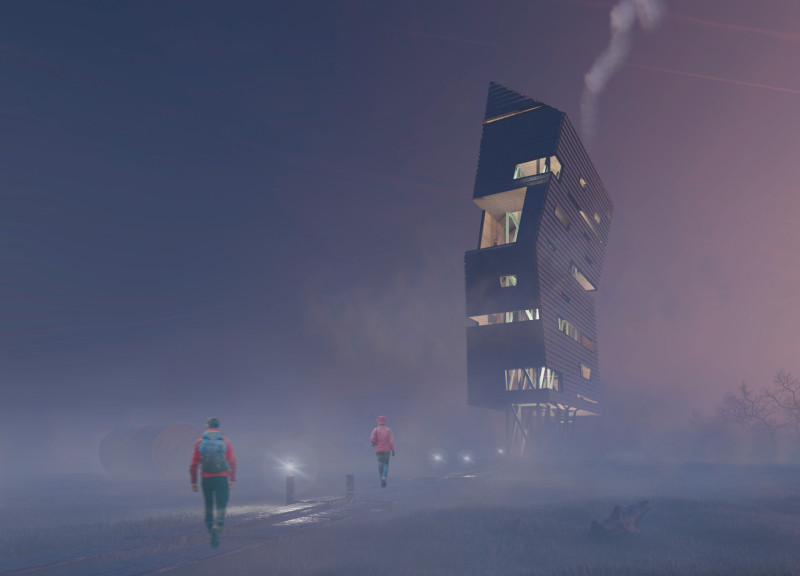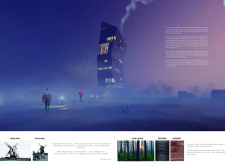5 key facts about this project
The Kurgi Observatory Tower stands as a significant addition to the landscape of Latvia and Estonia. It draws inspiration from the historical windmills in the region, serving not only as a landmark but also as a space for visitors to engage with nature. The design embraces modern architectural principles while connecting visitors to the area's agricultural heritage. The observatory is intended to enhance the experience of those who come to explore the natural beauty surrounding it.
Design Concept
The design concept takes cues from traditional windmill shapes, allowing the observatory to resonate with the cultural history of the region. The tower rises to a height of 35 meters, making it visible against the backdrop of the tree line. This height reinforces the purpose of the observatory as a lookout point, while still maintaining a sense of harmony with the surroundings.
Visitor Experience
An elevated wooden path guides visitors from multiple entry points on the farm to the observatory. This pathway ensures safe access while adding to the journey of exploration. The design includes both stairs and an elevator, making all levels of the tower accessible. This approach reinforces a welcoming atmosphere for everyone who visits.
Spatial Organization
Within the Kurgi Observatory, the layout features several levels that provide a range of viewpoints and gathering spaces. Walkways encircle a central vertical circulation space, with different widths that allow for seating areas, swings, and hammocks. Each of these features encourages visitors to take a moment to relax while enjoying the surrounding scenery and their unique perspectives.
Material Selection
The construction integrates practical materials like a metallic support system and local wood for the enclosure. This choice reflects a connection to the region's traditions while also aligning with contemporary building practices. The wooden elements provide warmth and a familiar texture, grounding the tower in its natural environment.
The observatory includes carefully placed openings that frame picturesque views, inviting natural light inside and enhancing the connection between the interior and the landscape.





















































